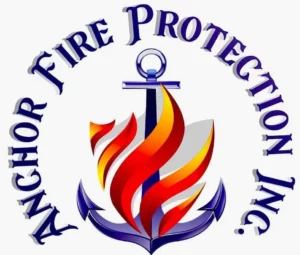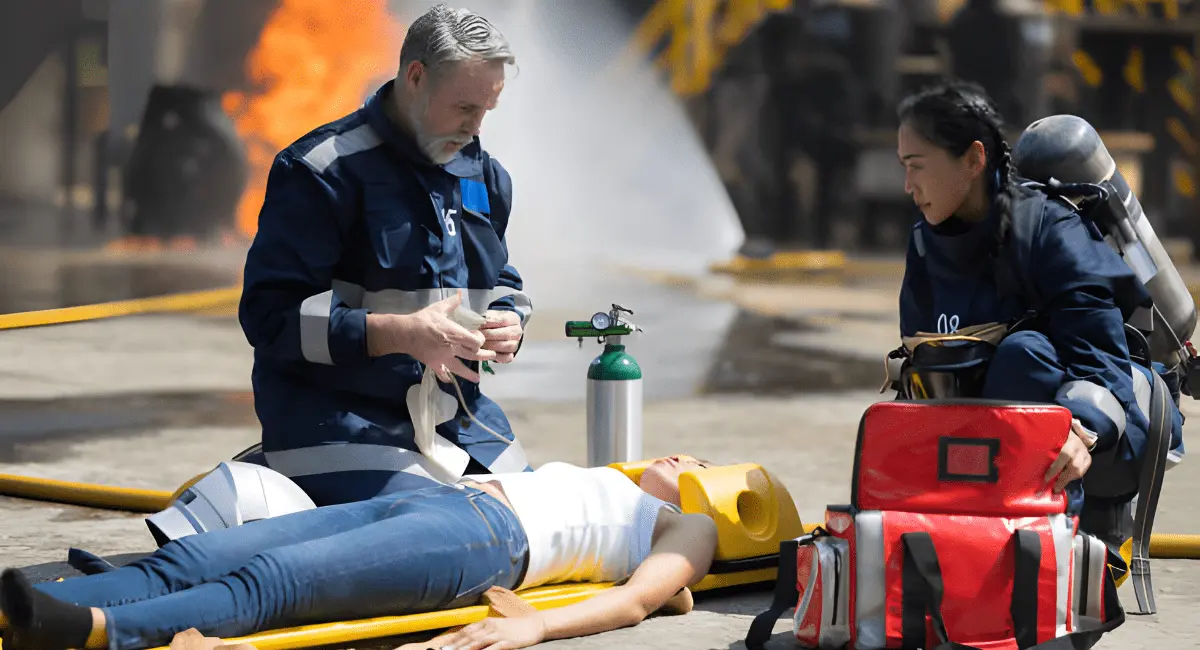Top Fire Safety Tips for the Workplace: Protecting Lives and Property
Workplaces are dynamic centres of creativity, teamwork, and productivity. However, when we think of our workplaces, fire safety may not be the first thing that comes to mind. It is an important factor for the safety of everyone on the premises. You will observe that each workplace is unique, with its own fire safety requirements. The law defines which fire safety tests companies and building owners must complete; therefore, Anchor Fire Protection Inc. can help you make your workplace fire-safe. This blog focuses on fire safety tips for the workplace. We will highlight the significance of workplace fire safety, fire safety awareness, and practical recommendations for implementing it.
Fire Safety Tips for Workplace
Workplace fires occur accidentally but suddenly get out of control in a work setting, which can result in property damage, injuries, and, sadly, even fatalities. They can stem from various sources, including electrical faults, cooking equipment, heating appliances, and negligence in handling flammable materials.Fire Risk Assessment
Fire risk assessments make individuals aware of the fundamentals of fire safety. It helps in the security of the client’s premises and provides an adequate assessment of fire threats to life, property, and business continuity.A complete report is produced and consultation is offered following the fire risk assessment to discuss the findings and required actions to achieve a satisfactory standard of office fire safety within your premises. Fire safety assessments includes:- Identifying potential hazards
- Assessing their severity
- Implementing strategies
Fire Safety for Employees
It is a legal responsibility to provide your employees with accurate information and training on fire safety. The appropriate course of action in an emergency can prevent fires from becoming more life-threatening, so it is critical that all employees, both new and old, are trained as frequently as possible according to the Regulatory Reform (Fire Safety) Order 2005.According to the NFPA, implementing a complete fire safety training programme reduces average property loss per fire by 43%. Conduct frequent safety training sessions to educate your staff members on the following:- Potential fire risks
- Equipment handling
- Evacuation procedures
- Use of safety equipment
- Is your fire alarm system functional?
- Is there an evacuation plan next to the fire alarm panel?
- Have the staff received instructions about the information on the fire alarm panel and evacuation plan?
- Where are your manual call points?
- Where are the heat and smoke detectors?
- Do you test your alarm every week?
Emergency Action Plan (EAP)
Take your time developing an emergency action plan that fits the requirements of your place of work. This plan should include evacuation procedures, assembly points, emergency contact information, and particular employee responsibilities during an emergency.Fire Safety Equipment
Your primary defenders include smoke alarms, fire extinguishers, and sprinkler systems. Make sure your workplace has the right kind and quantity of fire extinguishers for the size of your company and that everyone knows how to use them properly in an emergency. They must be maintained in accordance with the directions provided by the manufacturer.Fire extinguishers should not be pushed behind desks, and fire exits should not be blocked by machinery. Sprinkler systems and smoke detectors should never be blocked; nothing should come between these potentially life-saving devices.Fire Escape Routes
Escape routes in your company are a must because they will direct workers to a secure place. They should have clear indications and be well-lit. Your workers should be familiar with the route leading to the assembly point. Escape routes should include:- The exit doors should remain unlocked, and the fire doors should remain shut.
- All emergency routes and exits must be well-lit, including corridors, floor levels, staircases, and areas near firefighting apparatus.
- All fire safety signs should have pictures so that anyone can easily see them.
- Do not re-enter the building unless advised that it is safe to do so, even to get things.
Regular Fire Drills
Make fire drills a regular part of your office schedule, at least once a year, so that your staff is aware of what to do and where to go in case of an emergency. If any major changes are made to evacuation routes, conduct a fire drill as quickly as possible.After that, conduct a practice evacuation to record what went well and what did not, and make adjustments accordingly. Inform everyone about your progress and continue to practice until you have achieved perfection.You can also appoint someone in charge of the fire drills who will collaborate with the employer to develop evacuation plans and oversee evacuations during any kind of emergency. They should be given practical training on how to handle firefighting equipment.Electrical Safety
You should turn off all electrical appliances at the end of the day since they can easily overheat or malfunction. Do not overload circuits with more than the recommended capacity, since this might cause the fuse to blow, overheat, and create a fire. Keep the way to the electrical control panels free.Never keep anything directly in front of electrical control panels to give simple access to shutting off the system during an emergency. Keep a watch out for potential electrical issues and report them. Have all of your electrical equipment tested on a regular basis, and have a reporting mechanism in place for workers to follow. Poorly maintained equipment causes fires.Good Housekeeping
A clutter-free workplace is a safer one. Organize storage rooms, clear trash properly, and avoid congestion with materials.- Clutter, such as waste paper, cardboard, oily rags, or debris, contributes to flames by providing fuel and obstructing exits and emergency equipment.
- Handle and store chemicals safely. Determine flammability and provide appropriate ventilation. Read the label and the necessary information on the safety data sheet.
- Smoke only in authorised locations, and discard smoking materials carefully, preferably in a metal container.
- Arson is responsible for 45% of fires; therefore, remove any items like gasoline or kerosene.
The Cost of Workplace Fires
Workplace fires are dangerous because they can endanger lives and result in significant financial losses. According to the National Fire Protection Association, non-residential fires in the United States caused around $4.0 billion in property damage in 2022. Businesses may also suffer income loss, operational difficulties, increased insurance premiums, and legal obligations following a fire, in addition to property losses.The Human Impact
Workplace fires have not only financial implications, but also significant human damage. According to the U.S. Bureau of Labor Statistics, fires and explosions claimed 99 lives in the workplace in 2019, leaving families, coworkers, and communities devastated.Invest in Fire Safety at Work
We have covered all fire safety topics in this blog to assert how important it is to understand fire safety to protect your workplace better during a fire. It is a move to keep everyone at your workplace safe and ready. Quality training helps prevent fires and makes sure your team is prepared to act if one happens.The professionals at Anchor Fire Protection Inc. have the right skill set and experience to assist your business in complying with all legal requirements surrounding fire safety, including legislation. Please take a moment to have a look around our website, where you will find all the services we can provide your workplace with, from providing fire risk assessments, fire safety training, to providing full advisory services.FAQS
Fire safety matters a lot because fires can spread quickly, causing serious injuries, ruining property, and sometimes taking lives. Workplaces should take precautions to prevent fires and know what to do in an emergency to keep everyone safe.
- Prevent fires, and focus on preventing fires by addressing issues with electricity and flammable items.
- Prepare for the emergency by checking that all necessary equipment, such as fire extinguishers and alarms, is in working order.
- Be aware of the fire escape plan, fire threats, and how to operate equipment.
- Have a clear evacuation plan for safely exiting the building in the event of a fire.
- Encourage everyone to take responsibility for preventing fires, reporting hazards, and participating in drills.
KEEP YOUR PROPERTY SAFE
Related posts
-
Fire Safety Tips for the Workplace
-
Fire Safety Tips for Hospitals
-
How to size fire pumps?
-
Different types of sprinklers?
-
What is fire protection system?
-
Fire Extinguisher Inspection
-
Fire Sprinkler System Components
-
What are the most common types of fire pumps?
-
How much does a fire sprinkler system cost?
-
What is active and passive fire protection?

